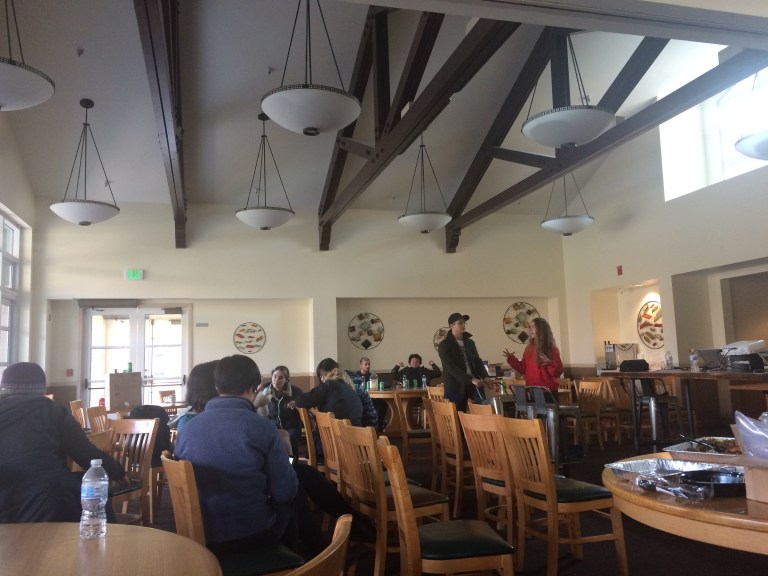From Friday night to Sunday afternoon, students huddled around computers in Gerhard Casper Dining Commons during the first-ever Stanford Fall Game Jam, a hackathon where participants were given 36 hours to develop a game from start to finish.
The event was hosted by SVGA Dev, a newly formed branch of the Stanford Video Game Association (SVGA). SVGA as a whole supports the creation of game design classes, brings video game developers to Stanford and organizes frequent local area network (LAN) parties where groups of people meet in the same area and play video games together on the same locally hosted server, according to the organization’s website.
Over the past summer, multiple SVGA members came together and formed SVGA Dev in order to focus on game development at Stanford.
“There were a lot of video game groups and gaming groups, but there wasn’t a club dedicated to specifically making games,” said Maya Ziv ’20, a member of SVGA Dev. “We wanted to have a space specifically devoted to making games instead of just playing them.”
At the beginning of the event, 23 participants divided into 15 teams of three or fewer people. Teams then created their video games using a variety of game engines — including Unity, Love2D and the Ren’Py visual novel engine — as well as art and music tools such as Photoshop, GIMP and Audacity.
While several hackathon participants had taken part in non-Stanford affiliated game jams in the past, most students had never participated in a game development hackathon before. Many also had limited game development or programming experience. To ensure everybody had the tools they needed to create a game, SVGA Dev team members hosted game development workshops during the competition.
“We want to make sure game making is accessible to people,” Ziv said. “A lot of people learned how to use Unity or Ren’Py for the first time. We taught them how to make audio; we taught them how to do asset design — the whole experience.”
Contest entries were judged by representatives from game development companies Pixelberry Studios and Zynga as well as from the University of California Santa Cruz. The judges played through each game and awarded prizes to the best game made by a first-time game jam participant as well as to the games with the best writing, design and art and audio. Throughout the judging period, participants also cast votes for their favorite game, which was then awarded the “Audience Choice” award.
A game titled “Stratofortress,” where the user manages resources while building a village that suffers from random collapse, took home the award for “Best Newcomer Game.” One team created a board game set in space, “Isolation,” which was awarded the prize for “Excellence in Writing.” The “Audience Choice” award was split between two games, which received the same number of votes. One of the winners, “Coming Out,” explored the perspective of a queer person through an introspective video game. “Falling in Fall,” the other winner, was a humorous game where the user is a feather falling endlessly through the sky.
Angela He ’21, a seven-time game jam veteran and SVGA Dev team member, took home awards in the “Excellence in Art and Audio” and “Excellence in Design” categories for her project, “There’s This Girl,” which explores the progression of a relationship from start to breakup to aftermath through the format of an interactive story.
“This was really cool because there were other Stanford students here,” He said. “Since I knew people here, it felt more like a fun event than a competitive event.”
Participants were asked to upload their games to a shared SVGA Dev folder at the end of the game jam, where they will be made available for the public to play on the SVGA Dev website.
Looking back on the event, Ziv described the the inaugural game jam as a “huge success,” adding that SVGA Dev plans to host another game jam in early spring.
Contact Ricky Grannis-Vu at rickygv ‘at’ stanford.edu.
The Daily article has been corrected to reflect that a judge was from the University of California Santa Cruz, not the University of Southern California. The Daily regrets this error.
